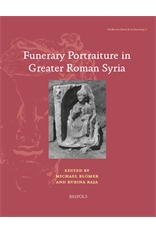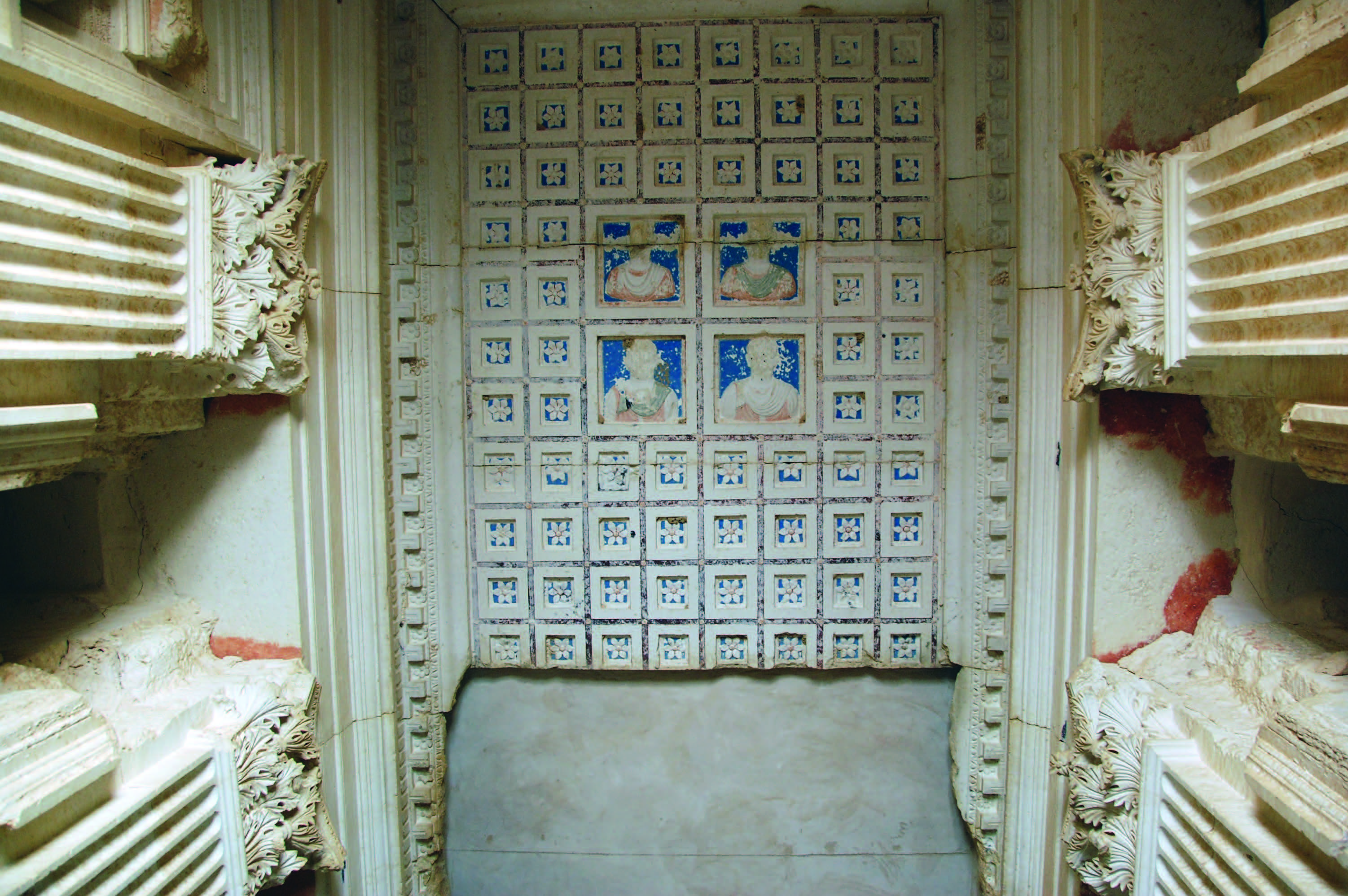Funerary Portraiture in Greater Roman Syria
New anthology edited by Assistant Professor Michael Blömer and Centre Director Professor Rubina Raja.


16 December, a new anthology about funerary portraiture in Greater Roman Syria was published. The publication provides an up-to-date survey of locally produced funerary sculpture and funerary traditions from several regions of ancient Syria and beyond.
Several cities in ancient Syria saw a rise in the production of funerary sculpture in the first century CE. The best-known and most outstanding example is the oasis city Palmyra in the Syrian desert. Here, thousands of funerary reliefs were produced in the first three centuries CE. Since 2012, the Palmyra Portrait Project has collected and studied more than 4,000 portraits from Palmyra. However, the portrait habit in Palmyra does not stand as an isolated phenomenon. Large quantities of funerary sculpture were produced in other cities, such as Hierapolis and Zeugma. Furthermore, locally produced funerary reliefs are known from rural areas of northern and central Syria, from Emesa and Epiphaneia, Lebanon as well as the Decapolis region.
Until now, however, little attention has been paid to the way in which local and regional production in this broader region formed part of a wider pattern of sculptural and iconographical development across the Roman Near East. By exploring different material throughout the region, this publication offers a new and holistic approach to the understanding of ancient funerary portrait traditions within Greater Roman Syria. As such, this book identifies and discusses influences, connections, and iconographical analogies in the region, as well as local differences, larger-scale boundaries, and ruptures in traditions. The book also includes contributions on material from Egypt and Greece in an attempt to set the funerary portrait traditions in an even wider framework.
The anthology stems from a conference of the same name that was organised by Michael Blömer and Rubina Raja in the Royal Danish Academy of Sciences and Letters in 2017. The conference was a jointly conceptualised project, and it is the intention to make a larger collaborative project on the theme in the future. The book thus is a first step in which comparative material has been collected and shared with a wider audience.
Funerary Portraiture in Greater Roman Syria is volume 6 in the series ‘Studies in Classical Archaeology’, published by Brepols Publishers. The publication was made possible with funds provided by the Palmyra Portrait Project and the Carlsberg Foundation as well as professor Christopher Hallett, Berkeley University.
Contributions related to UrbNet, the Danish-German Jerash Northwest Quarter Project and Palmyra Portrait Project:
Blömer, M. & Raja, R. (2019). “Funerary Portraits in Roman Greater Syria — Time for a Reappreciation”, in: Blömer, M. & Raja, R. (eds.), Funerary Portraiture in Greater Roman Syria. Studies in Classical Archaeology 6. Turnhout: Brepols Publishers, 1-4.
Blömer, M. & Raja, R. (2019). “Shifting the Paradigms: Towards a New Agenda in the Study of the Funerary Portraiture of Greater Roman Syria”, in: Blömer, M. & Raja, R. (eds.), Funerary Portraiture in Greater Roman Syria. Studies in Classical Archaeology 6. Turnhout: Brepols Publishers, 5-26.
Blömer, M. (2019). “The Diversity of Funerary Portraiture in Roman Commagene and Cyrrhestice”, in: Blömer, M. & Raja, R. (eds.), Funerary Portraiture in Greater Roman Syria. Studies in Classical Archaeology 6. Turnhout: Brepols Publishers, 45-64.
Raja, R. (2019). “Funerary Portraiture in Palmyra: Portrait Habit at a Cross-Road or a Signifier of Local Identity?”, in: Blömer, M. & Raja, R. (eds.), Funerary Portraiture in Greater Roman Syria. Studies in Classical Archaeology 6. Turnhout: Brepols Publishers, 95-110.
Krag, S. (2019). “Palmyrene Funerary Female Portraits: Portrait Tradition and Change”, in: Raja, R. (2019). “Funerary Portraiture in Palmyra: Portrait Habit at a Cross-Road or a Signifier of Local Identity?”, in: Blömer, M. & Raja, R. (eds.), Funerary Portraiture in Greater Roman Syria. Studies in Classical Archaeology 6. Turnhout: Brepols Publishers, 111-132.
Lichtenberger, A. & Raja, R. (2019). “Portrait Habit and the Funerary Portraiture of the Decapolis”, in: Raja, R. (2019). “Funerary Portraiture in Palmyra: Portrait Habit at a Cross-Road or a Signifier of Local Identity?”, in: Blömer, M. & Raja, R. (eds.), Funerary Portraiture in Greater Roman Syria. Studies in Classical Archaeology 6. Turnhout: Brepols Publishers, 133-150.
Further links:
Studies in Classical Archaeology: http://www.brepols.net/Pages/BrowseBySeries.aspx?TreeSeries=SCA
Danish-German Jerash Northwest Quarter Project: https://projects.au.dk/internationaljerashexcavation/
Palmyra Portrait Project: https://projects.au.dk/palmyraportrait/
